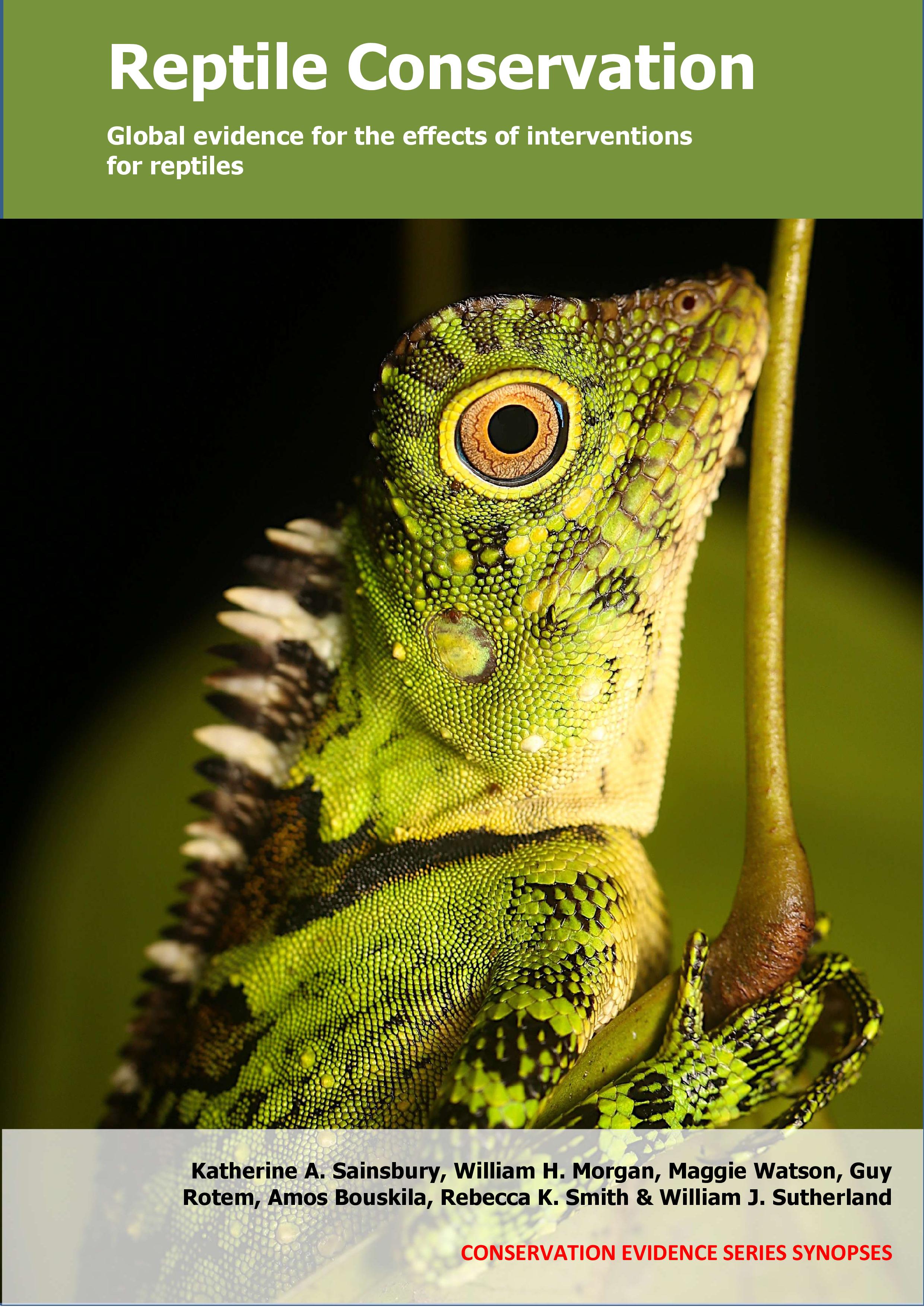Actions to conserve biodiversity
We have summarised evidence from the scientific literature about the effects of actions to conserve wildlife and ecosystems.
Review the evidence from the studies
Not sure what Actions are? Read a brief description.
Search for evidence
e.g. "frogs chytrid"
312 Actions found
Refine
Hide
312 Actions found
Download Actions
| 0 selected |
|
Order results by:
| Action | Effectiveness | Studies | Category | |
|---|---|---|---|---|
|
Use bindings to keep trawl nets closed until they have sunk below the water surface Action Link |
No evidence found (no assessment) | 0 |
|
|
|
Use biodegradable materials to construct fishing gear to prevent entanglement of reptiles in lost or abandoned gear Action Link |
No evidence found (no assessment) | 0 |
|
|
|
Use catch and hook protection devices Action Link |
No evidence found (no assessment) | 0 |
|
|
|
Use circle hooks instead of J-hooks Action Link |
Awaiting assessment | 11 |
|
|
|
Use collar-mounted devices to reduce predation by domestic animals Action Link |
Awaiting assessment | 2 |
|
|
|
Use conditioned taste aversion to prevent carnivorous reptiles from eating toxic invasive cane toads Action Link |
Awaiting assessment | 2 |
|
|
|
Use dyed bait Action Link |
Awaiting assessment | 2 |
|
|
|
Use education and/or awareness campaigns to improve behaviour towards reptiles and reduce threats Action Link |
Awaiting assessment | 7 |
|
|
|
Use fencing to prevent reptiles from accessing facilities Action Link |
No evidence found (no assessment) | 0 |
|
|
|
Use holding pens or enclosures at release site prior to release of captive-bred reptiles Action Link |
Awaiting assessment | 2 |
|
|
|
Use holding pens or enclosures at release site prior to release of wild reptiles Action Link |
Awaiting assessment | 7 |
|
|
|
Use hormones and/or other drugs during captive-breeding programmes to induce reproduction/birth Action Link |
Awaiting assessment | 9 |
|
|
|
Use irrigation systems Action Link |
Awaiting assessment | 2 |
|
|
|
Use larger hooks Action Link |
Awaiting assessment | 2 |
|
|
|
Use low intensity lighting Action Link |
Awaiting assessment | 4 |
|
|
|
Use lower profile gillnets with longer/no tie-downs Action Link |
No evidence found (no assessment) | 0 |
|
|
|
Use nest covers to protect against human disturbance Action Link |
Awaiting assessment | 2 |
|
|
|
Use non-offset hooks Action Link |
Awaiting assessment | 2 |
|
|
|
Use non-ringed hooks Action Link |
Awaiting assessment | 1 |
|
|
|
Use patch retention harvesting instead of clearcutting Action Link |
No evidence found (no assessment) | 0 |
|
|
|
Use prescribed burning in combination with grazing Action Link |
Awaiting assessment | 5 |
|
|
|
Use prescribed burning in combination with herbicide application Action Link |
Awaiting assessment | 5 |
|
|
|
Use prescribed burning in combination with vegetation cutting Action Link |
Awaiting assessment | 10 |
|
|
|
Use prescribed burning: Forest, open woodland & savanna Action Link |
Awaiting assessment | 28 |
|
|
|
Use prescribed burning: Grassland & shrubland Action Link |
Awaiting assessment | 14 |
|
Download Actions
| 0 selected |
|

Reptile Conservation - Published 2021
Reptile synopsis
Watch this search
If you are familiar with RSS feeds, please click the button below to retrieve the feed URL:
RSS feed for this searchIf you are unfamiliar with RSS feeds, we would suggest reading this BBC article.
Unfortunately, due to the number of feeds we have available, we cannot provide e-mail updates. However, you could use tools such as Feed My Inbox to do this for you.
What are 'Individual studies' and 'Actions'?
Individual studies
An individual study is a summary of a specific scientific study, usually taken from a scientific journal, but also from other resources such as reports. It tells you the background context, the action(s) taken and their consequences.
If you want more detail please look at the original reference.
Actions
Each action page focuses on a particular action you could take to benefit wildlife or ecosystems.
It contains brief (150-200 word) descriptions of relevant studies (context, action(s) taken and their consequences) and one or more key messages.
Key messages show the extent and main conclusions of the available evidence. Using links within key messages, you can look at the paragraphs describing each study to get more detail. Each paragraph allows you to assess the quality of the evidence and how relevant it is to your situation.
Where we found no evidence, we have been unable to assess whether or not an intervention is effective or has any harmful impacts.





)_2023.JPG)














